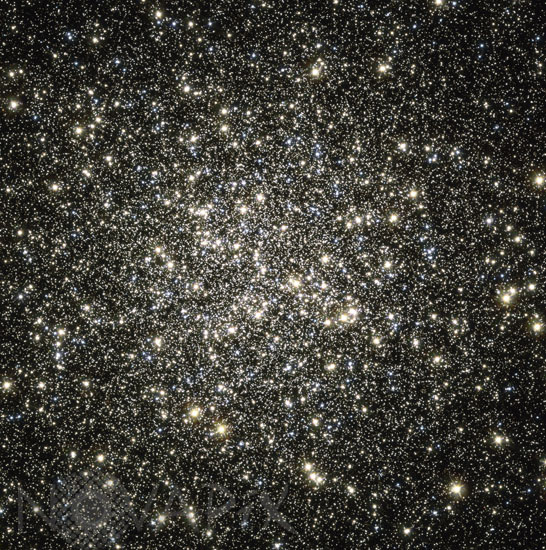Photo Agency - Astronomy - Space - Nature

The Great Globular Cluster in Hercules M13
author: Nasa/Esa/Hubble Heritage team/Novapix
reference: a-agb62-05010
Image Size 300 DPI: 38 * 38 cm
M13 is home to over 100,000 stars and located at a distance of 25,000 light-years. These stars are packed so closely together in a ball, approximately 150 light-years across, that they will spend their entire lives whirling around in the cluster. Near the core of this cluster, the density of stars is about a hundred times greater than the density in the neighborhood of our sun. These stars are so crowded that they can, at times, slam into each other and even form a new star, called a "blue straggler." The brightest reddish stars in the cluster are ancient red giants. These aging stars have expanded to many times their original diameters and cooled. The blue-white stars are the hottest in the cluster. Globular clusters can be found spread largely in a vast halo around our galaxy. M13 is one of nearly 150 known globular clusters surrounding our Milky Way galaxy. Globular clusters have some of the oldest stars in the universe. They likely formed before the disk of our Milky Way, so they are older than nearly all other stars in our galaxy. Studying globular clusters therefore tells us about the history of our galaxy. This image is a composite of archival Hubble data taken with the Wide Field Planetary Camera 2 and the Advanced Camera for Surveys. Observations from four separate science proposals taken in November 1999, April 2000, August 2005, and April 2006 were used. The image includes broadband filters that isolate light from the blue, visible, and infrared portions of the spectrum.
Keywords for this photo:
2008 - ASTRONOMY - GLOBULAR CLUSTER - HERCULES - HST - HUBBLE SPACE TELESCOPE - M13 - NGC 6205 - STAR - STAR CLUSTER -
Contact : Stéphane Aubin +33-(0)9-51-26-53-76
© Novapix - All rights reserved


